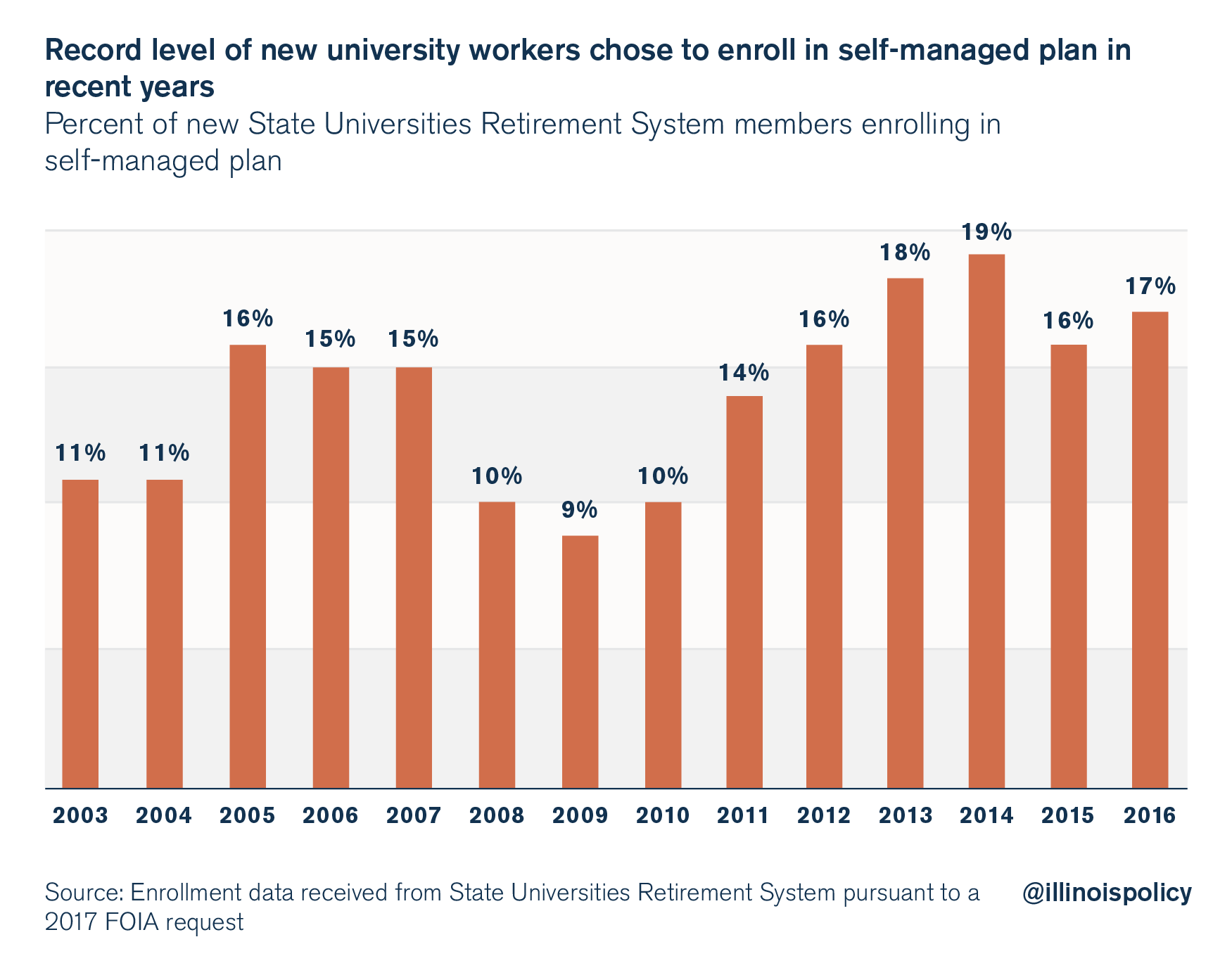Illinois senator’s proposal offers pension reform through 401(k)-style plans
State Sen. Dale Righter, R-Mattoon, has proposed a plan that would give all state workers access to retirement plans that offer portability and flexibility – and an escape from Illinois’ broken pension system.
At a time when everything coming out of the Illinois Senate seems to involve multibillion-dollar tax hikes, one senator is finally offering real reform for the state’s biggest fiscal crisis: its pension system.
State Sen. Dale Righter, R-Mattoon, has sponsored new legislation that would help state government workers take back control of their retirement savings. His bill has new state employees hired on or after July 1, 2018, enroll in a 401(k)-style plan, instead of forcing them into one of the worst-funded pension systems in the country.
Righter’s proposal also gives current workers covered by the state’s five retirement plans – state workers, teachers, university employees, judges and members of the General Assembly – the option to move into the 401(k)-style plan for benefits earned going forward.
Under the plan, state workers not covered by Social Security set aside a healthy 15 percent of their salary each pay period. Each worker contributes 8 percent of each paycheck into his or her own 401(k)-style account, and the state matches that contribution with another 7 percent.
For workers covered by Social Security, the contributions are 3 percent by each party.
Contributions to the plan are mandatory.
Righter’s plan is modeled on an Illinois retirement system that has existed for 20 years
A 401(k)-style retirement plan for state workers isn’t a novel concept – in fact, the solution has been right under lawmakers’ noses for nearly 20 years.
Righter’s plan is smart: He takes the one good retirement program already working in Illinois – an optional 401(k)-style plan for university workers – and he simply expands it for all state workers.
All concerns about constitutionality, viability and fairness are addressed because the program Righter leverages has existed in Illinois for nearly 20 years.
And more than 20,000 state university workers already have these 401(k)-style plans as their retirement plans. (State university workers are not covered by Social Security.)
Since 2012, 15 to nearly 20 percent of new state university workers have chosen to enroll in the 401(k)-style plan annually. That’s a lot of participants, considering the state pension plan, and not the 401(k)-style plan, is the automatic default offered by Illinois’ public universities and colleges when they hire new employees.

Workers who participate in the university plan do not have to depend on IOUs from House Speaker Mike Madigan, Mayor Rahm Emanuel or Gov. Bruce Rauner. Workers control their accounts, and those accounts are portable.
In a state where many pension plans are headed toward bankruptcy, it’s not fair that every state worker doesn’t have this option.
Righter’s proposal fixes that.
Self-managed 401(k)s give workers control
Righter also recognizes that everybody loses under the current pension system.
Government workers fear their pensions will eventually be slashed. Many of Illinois’ pension systems are nearing insolvency. Taxpayers are already tapped out, as they pay the nation’s highest property taxes. And people who rely on core government services are seeing their services cut as pensions now swallow 25 percent of the state budget.
Righter’s plan begins a process back toward normalcy.
These 401(k)-style plans won’t fix the legacy problems of pensions, but they will bring back certainty and transparency to the system as more and more workers join the program. Participating retirees can see their savings in retirement accounts they control. And both taxpayers and government budgets will finally know with certainty what their obligations are.
There’s much more to do to fix pensions – such as tackling the $130 billion debt that’s hanging over taxpayers. But that will only happen with constitutional changes or if the plans become insolvent.
Until then, this is the best plan that passes constitutional muster and that finally gives all workers retirement freedom, not just those in the current state universities 401(k)-style plan.
To learn more about the pension reform plan that’s right under lawmakers’ noses, click here.
